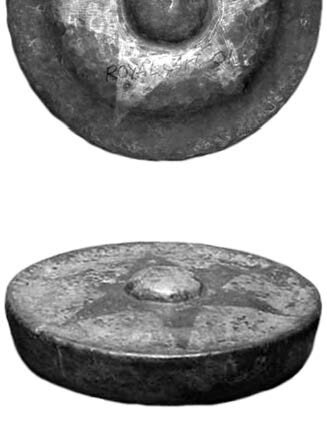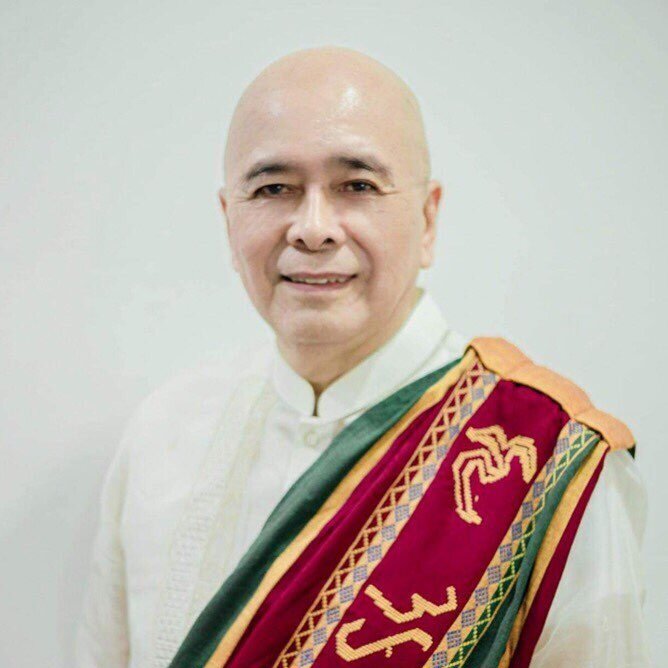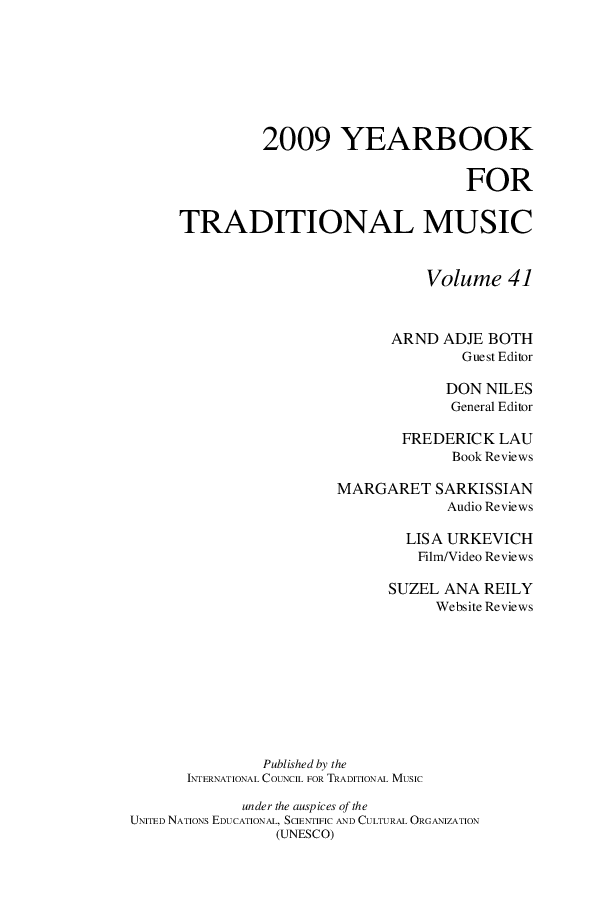Gongs, Bells, and Cymbals: The Archaeological Record in Maritime Asia from the ninth to the seventeenth centuries
by Arsenio C. Nicolas
The circulation of musical instruments around Asia, in particular those in bronze, and what it tells us about regional trade in ancient times.

Publication: 2009 Yearbook for Traditional Music, International Council for Traditional Music under the auspices of UNESCO
Published: 2009
Author: Arsenio C. Nicolas
Pages: 33
Language : English
pdf 1.1 MB
- “The growth and expansion of maritime trade in the first millennium CE altered the musical landscape of Asia, from earlier Austronesian and Austroasiatic migrations, to the early contacts with India, China, Arabia, and the continuing navigation towards the Pacific and Oceania. Much later in the tenth century, Chinese chronicles describe that peoples from the south called Luzoes (Luzon, Philippines) had invaded its southern shores, while Indian histories record the voyages of sailors from western Indonesia. By the eighth century, Austronesian languages from Borneo had spread towards Madagascar. A trade centred on beads, tin, copper, pottery, ceramics, natural products, and food also carried musical instruments and musicians bearing new ideas in music making and ritual life.”
- “The appearance of gongs from at least the tenth century created a new music culture in Asia: a successor to the earlier movements of musical ideas from the ancient migrations of the Austronesian and Austroasiatic speakers, and the spread of bronze drums; and antedating the introduction of European music in the age of colonialism during the sixteenth century. Gongs subsequently created new aesthetics of sound and music composition, known on Java and Bali as the gongan structure, which became models for the more ancient bamboo and wooden musical ensembles.”
- “Flat gongs are illustrated in the temples in Amaravati (seventh century) and Hoysala in India (twelfth to thirteenth centuries), and in Baphuon (eleventh century) and Angkor in Cambodia (eleventh to thirteenth centuries). Gongs, however, are not carved on the reliefs of the ninth-century Borobudur and Prambanan temples on Java, but they are found much later in the bas-reliefs of the temples of Kediri (early thirteenth century), Panataran, Ngrimbi, and Kedaton in east Java (fourteenth century), and Sukuh in Central Java (fifteenth century). Patrick Kersalé: confusion with small gongs (about 20 cm in diameter) played by Chinese musicians on bas-reliefs at Bayon and Banteay Chhmar.”
- “Flat gongs had been circulating in maritime Asia in China, Vietnam, Philippines, Borneo, Sumatra, and Singapore since the tenth century. Overland routes through the mainland had certainly transported these gongs. These could have reached India around this time, and would have been then etched on the walls of Hoysala temple by the twelfth century. The medium sized, suspended gongs on walls of Angkor Wat in Cambodia are bossed rather than flat, and the circular gongs-in-a-row clearly show these were already bossed gongs, earlier than the gulintangan (gongs-in-a-row) fragment found in a Brunei fifteenth century site.”
ADB Input:
- Several musicologists, including Patrick Kersalé — whom we have consulted respecting this publication — argue that the instruments shown on Angkorian bas-reliefs are only small gongs, exclusively played by Chinese musicians.
- On the same subject, in particular the interaction between Indian and Southeast Asian musical traditions, the author has published an important contribution: “Early Musical Exchange Between India and Southeast Asia” (in Early Interactions between South and Southeast Asia Reflections on Cross-Cultural Exchange, chap 17, ed. by Pierre-Yves MANGUIN, A. MANI and Geoff WADE, ISEAS, Singapore and Manohar, 2011)
- In his essay “Aspects of Music Research in Asia in the Twenty-First Century. Connections between Mainland Asia and Island Southeast Asia” (in Essays in Music and Cultural Diversities, Bangkok, College of Music, Mahasarakham University, 2010), the author offers the following chronology of a history of music in Asia:
“1. The migrations of the Austroasiatic, Indo-Dravidian, Sino-Tibetan, Hmong-Mien, Tai-Kadai, Austronesian, and Oceanic language groups, [comprising more than 3,000 languages with over 3 billion speakers today] and the use of these languages in vocal music, in the form of chants, epics, love songs, alternating songs and ritual music and the early musical exchanges among the peoples of Asia through maritime and inland trade routes.
“2. The use of bamboo, wooden and other natural materials for musical instruments in the form of bamboo tubes, bamboo slit drums, flutes, pipes, wooden percussion logs, pairs of sticks, rattles, xylophone blades and bars, among others.
“3. The use of bronze in the manufacture of bells from about the third millennium BCE, bronze drums from about mid-first millennium BCE, and flat gongs and bossed gongs before or after tenth century CE.
“4. Within the vast varieties of cultures, languages, religions and music of Asia, the spread of Indian and Chinese religions in Asia, the construction of temple and court complexes that gave rise to a new aesthetics not only in music but also in architecture, language and literature, from the beginning of the first millennium, CE, and thereafter, the arrival of Middle Eastern religions, contributing new ideas into the music cultures of Asia. While India, China and the Middle East provided new music structures and practices, little is known about how the rest of Asia had exchanged with or introduced musical ideas into India, China and the Middle East.
“5. The European conquest of Asia and the introduction of Christianity brought in European music and aesthetics, beginning in the mid-sixteenth century and continuing into the contemporary period.
“6. The twentieth century ushered in a global movement of ideas in music, and the invention of digital technology and the marketing of music as a commodity that have threatened the existence of the diversity of music cultures all over the world.”
Photo: Royal Captain Gong, National Museum of the Philippines.
Tags: music, musical instruments, shipwrecks, Java, Bali, regional trade, maritime trade, Philippines, Indian influences, Chinese influences, gongs, musicology
About the Author

Arsenio C. Nicolas
Dr. Arsenio Nicolas is a musicologist, philologist and historian of the performing arts from the Philippines, specialized in Southeast Asian musical forms and instruments.
With a PhD. from Cornell University, USA, Dr. Arsenio Nicolas is a visiting professor at the College of Music at Mahasarakham University, Talat, Thailand.
He has authored numerous essays on Southeast Asian music and musical instruments, including “Early Musical Exchange between India and Southeast Asia” (in Early interactions between South and Southeast Asia: Reflections on cross-cultural exchanges, ed. PY Manguin, A. Mani and G. Wade, Singapore and Delhi, 2011).

